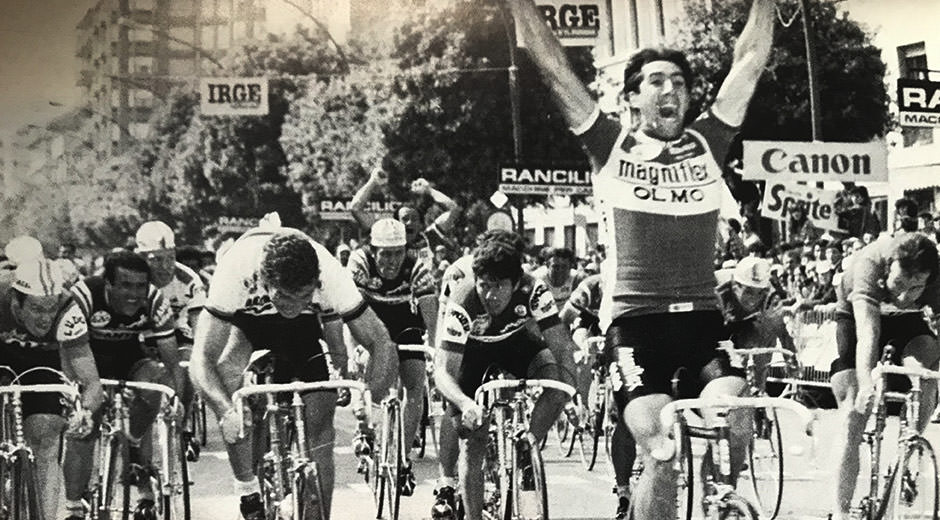

The Giro d’Italia is one of world cycling’s three major
events alongside the Vuelta a Espana and the Tour de France, and the first in
the 2019 calendar. With more than 100 years of history the event takes in some
of Italy’s most famous sights and covers thousands of kilometres in the process
making it one of the most gruelling events on the UCI World Tour.
Featuring short sprints and lung-busting endurance rides
across the city streets and mountain road stages, this year’s Giro d’Italia
is set to be one of the most hotly contested in years with 22 teams consisting
of eight riders each – 176 individual riders – getting on their bikes and
covering the 21 stages as quickly as possible as they go in search of the
lucrative pink jersey and the title of champion.
Ahead of this year’s event we’ve compiled a detailed
guide to the Giro d’Italia giving you all you need to know about one of road
cycling’s most watched events.
When does the Giro d'Italia start?
The 2019 Giro d’Italia gets underway with an
8.2-kilometere time trial around the streets of historic Bologna in Northern
Italy on Saturday 11th May. This year the riders will start with a
6km sprint on the city’s relatively straight and flat roads before finishing
with a steep 2km climb to San Luca.
What route does the Giro d'Italia take?
Having completed a relatively short, sharp start the Giro
d’Italia heads south west with a 200km ride from Bologna to the small Tuscan
town of Fucecchio. There are then four more days of endurance rides before reaching
the southern-most point on the route in San Giovanni Rotondo in the province of
Foggia.
The competition heads back up the Adriatic coastline
before looping around Northern Italy with riders taking on a number of time
trials and mountain stages. Many of this year’s stages will take in new
sections including a number of mountain passes that haven’t put riders to the
test before, ensuring that there is plenty to keep riders guessing, while there
are a number of classic stages on this year’s route including the Gavia and
Mortirolo mountain sections. This year’s competition eventually concludes in
the beautiful and historic city of Verona with riders tackling a third and
final time trial over 15.6 kilometres to conclude the event.
When was the first Giro d'Italia?
The first Giro d’Italia took place in 1909 with this
year’s event set to be the 102nd running of the competition. The
very first Giro d’Italia wasn’t created as a professional road cycling event as
part of a global Tour as we know it today, instead, it was formed as a way of
increasing sales of Italy’s leading newspaper the Gazzetta dello Sport.

Back then the 1909 event covered a total distance of
2,447 kilometres, starting and finishing in Milan with eight stages spread over
a period of 18 days.
How long is the overall event?
In total the 21-stage Giro d’Italia will cover an
eye-watering 3,518.5 kilometres across Italy, starting out in Bologna and
finishing in Verona on Sunday 2nd June – almost a month after the bikes
roll out for the first time trial in Bologna. That equates to 21 individual
stages over a 23-day period with the only rest days coming between stages 9 and
10 and stages 15 and 16.
Are there any names to look out for in this year's event?
Last year’s winner Chris Froome will not be present at
this year’s Giro having chosen to put his focus on regaining his Tour de France
title from Geraint Thomas, who has also opted against taking part in Italy this
year.

That means that two of the biggest names in road cycling
will not be in contention for the title this year throwing it wide open to a
number of potential winners. Among the favourites to take the coveted title,
and first win in the series of Grand Tours in 2019, are the likes of Britain’s
Simon Yates who led the 2018 Giro for two weeks before a disastrous stage 19
saw him crash and drop out of contention.
Other potential winners of this year’s Giro include
Vincenzo Nibali, Tom Dumoilin, Miguel Angel Lopez and bookmakers favourite
Primoz Roglic of Slovenia.
What do the coloured jerseys mean?
At the Giro d’Italia there are four coloured jerseys worn
by leading riders, each symbolizing their performance in this year’s
competition. Similar to the yellow jersey worn by the rider currently leading
the Tour de France, the Maglia Rosa or pink jersey is worn by the general
classification leader – the rider at the top of the timesheets and currently
on-course for the overall victory.

The blue jersey, known locally as the Maglia Azzurra, is
awarded to the King of the Mountain – the rider who completes each of the
mountain stages in the best time, accumulating points for their finishing
position throughout the Giro. There is also a red jersey which is worn by the
rider with the most points in the Giro which are collected through stage
victories and finishing positions.
Finally, there is also a jersey worn by the leading young
rider. A category dedicated to those under the age of 25, the white jersey is
worn by a rider under 25 with the lowest overall time – just like the main pink
jersey.

